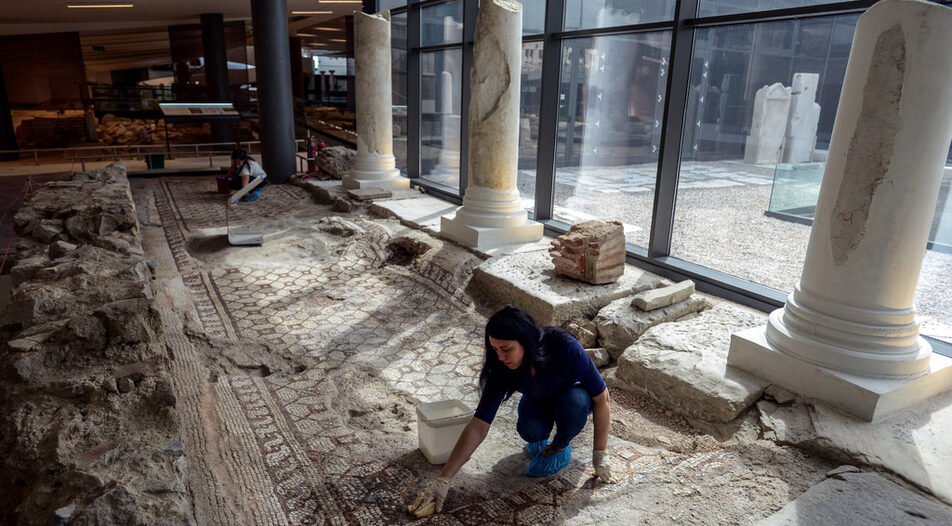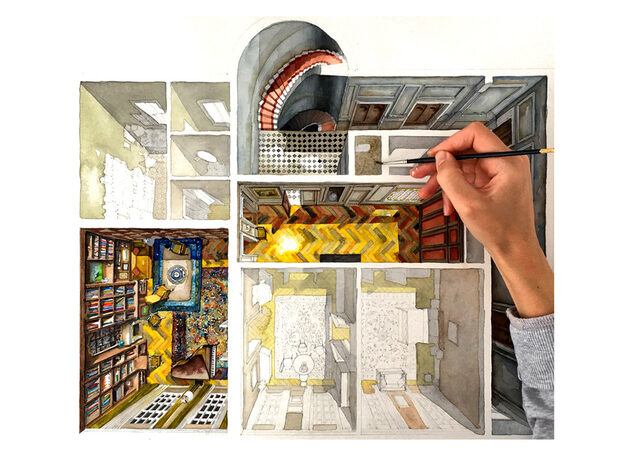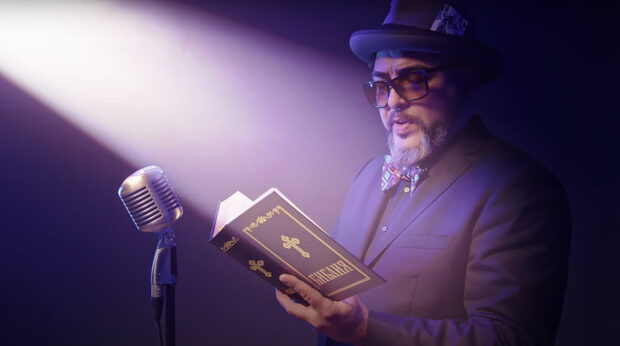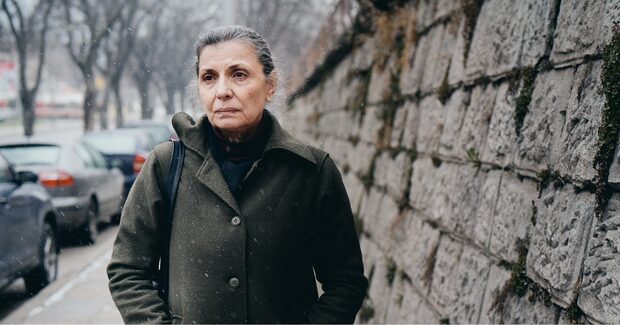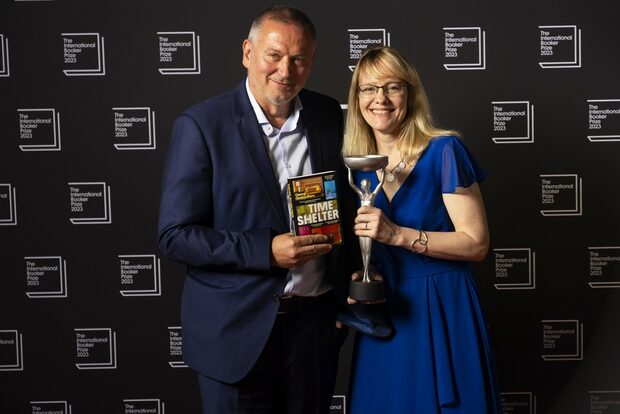In 1982, the construction of the Maria Louisa Boulevard in Plovdiv was in full swing. As often happens in one of Europe's most ancient cities, underneath the surface a new archeological artifact was uncovered. Yet, these particular remains were altogether different - a grand temple with a history spanning more than 16 centuries. And at the end of April this year, almost four decades after the site was first unearthed, the Bishop's Basilica of Philipopolis was restored to its previous grandeur under a protective shelter.
Boasting over 2,000 square meters of preserved mosaics, it's Bulgaria's largest early Christian temple. It's certainly a feast for the eyes, but classic history lovers will also find a formidable site to explore. Behind its reconstruction stands a remarkable collaboration between Plovdiv Municipality, the Ministry of Culture, the America for Bulgaria Foundation (AFB) and scores of other organizations and experts that executed one of the largest - and most successful - public-private partnerships in Bulgarian history. Investment in restoring the landmark by AFB and the local authorities has so far topped 10 million euro, but it has been money well spent. UNESCO has already expressed interest in the Basilica and since the last week of April it has been open to the public. Archeologists will also continue exploring the site for years to come.
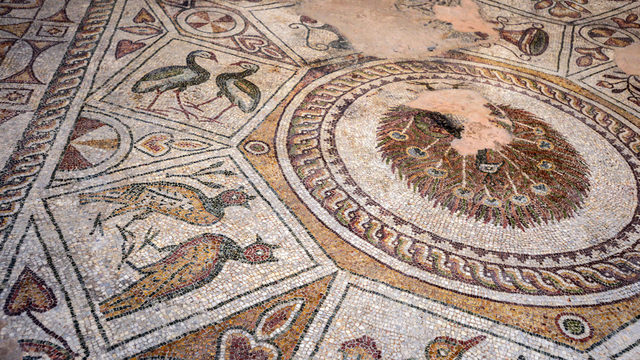
Roman remains under the boulevard
The remains of the basilica were discovered during the construction of the boulevard in the 1980s by archeologist Elena Kesyakova, and its route was altered in order to bypass them. Until about six years ago, grassland covered the archeological site preserving centuries-old mosaics, as resources were scarce.
The idea for the museum came after the success story of the Small Basilica, a stone's throw away from the large one. "The small basilica was an abandoned site from the 90′s; it was left unattended and unprotected and the only visitors were treasure hunters and children. It was in a very poor state," says Assoc. Prof. Elena Kantareva-Decheva, who has been in charge of the restoration team that has worked on the mosaics since 2015, and is now the Deputy Director of the municipal museum "Old Plovdiv". "When we launched the project, there were doubts whether we would manage to complete it at all, if we would be able to collect all the mosaics and construct the protective structure. In the end, everything turned out well," she adds.
The successful restoration of the Small Basilica inspired what would become the most important donor and partner involved in unearthing the Bishop's Basilica - AFB - to muster expertise and financial support. Progress stalled for various reasons for several years until, in 2016, the Municipality took the bold decision to practically dismantle one of the nearby central streets covering part of the temple. "Plovdiv has a reflex when it comes to archeology," says Stefan Stoyanov, deputy mayor of the city.
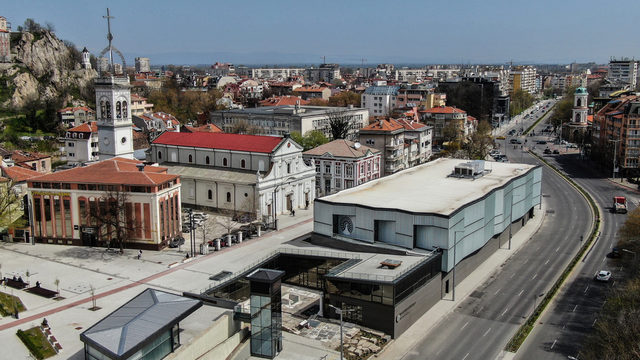
A very long history...
"The historical value of the place is of huge importance. There was a temple of the [Roman] Imperial cult dating back to the first century," says Lenko Lenkov, program director at the AFB. It was in this sacred place where an early Christian basilica appeared. Dr. Stanislav Stanev from the Institute of Art Studies - Bulgarian Academy of Sciences describes the great temple that appeared in the IV c. AD as their "topographic successor".
Archeologists unearthed two layers of mosaic - one from the end of the IV c. AD and another from around the beginning of the VI c. AD. Today, visitors are greeted by a large and impressive image of a peacock at the entrance to the Basilica, while over 100 images of birds - a synecdoche for paradise - cover the holiest part of the basilica, the presbytery.
What makes the Basilica special is the proof that it was once the house of one of the first Roman Bishops. Dr. Stanev says: "There is a donation inscription, of which only a third has survived, situated almost in the middle of the lower mosaic floor in the south nave. Our epigrapher Nikolai Sharankov reads what is preserved from the inscription, as follows: '[someone] made the mosaic during the time of Bishop []kian'." He adds that the epigrapher suggests that the name of the Bishop is either [Mar] kian or [Lu] kian from the second half or the end of the IV century.
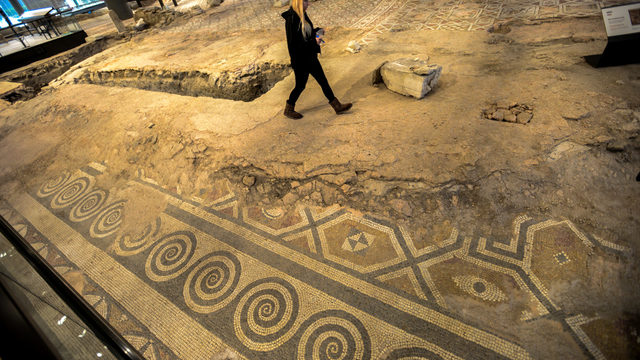
And bright future
Currently, the Basilica is covered by a protective structure that shelters the mosaic and enables the ongoing study of the site. The building has two floors, with one layer of the mosaic moved to the top level so that it can be viewed in better detail. A cultural center gives visitors the chance to experience life in this bygone era - there are models of the building, as well as 3D glasses for a Virtual Reality experience. There are also various workshops for visitors and a children's interactive area.
While locals and tourists can now visit the historic site, archaeologists can still busy themselves underground. The Ministry of Culture of Bulgaria contributed by providing financing for 20 full-time positions. Additionally, Mr Stoyanov adds that there are very few other places in Europe where specialists can work on site and this might open up opportunities for exchanges under the Erasmus+ program. "We joke that Prague and Budapest have been exhausted. That's why a wave of curious people is coming to the East," the Deputy Mayor adds.
A model public-private partnership
Aside from its historic value, the restoration is also a great - and rare - example of a successful public-private partnership. The Municipality of Plovdiv, AFB and the state, represented by the Ministry of Culture, are just some of the collaborators. The CEO of America for Bulgaria, Desislava Talyokova, says the partnership has a much broader dimension. Private sector companies contributed with donations. One example is energy supplier EVN investing 60,000 euro to construct a playground, a charging station for electric cars and the purchase of augmented reality glasses. The bathroom, sanitary ware and plumbing materials company "Ideal Standard" provided sanitary equipment.
The restoration process also involved members of the scientific community from various specialities (historians, epigraphers, restoration specialists among others), as well as hundreds of volunteers who helped remove tons of soil from the protective coating of the mosaic. About 50 suppliers and contractors took part in the excavation and construction of the protective structure and almost all are Bulgarian companies, said Desislava Talyokova.
In addition, the Ministry of Culture has approved the Basilica for the UNESCO List of World Cultural and Natural Heritage, the first Bulgarian landmark to apply for the status since the 1980s. "The adventure of the basilica is only just beginning," Mr Lenkov concludes.
In 1982, the construction of the Maria Louisa Boulevard in Plovdiv was in full swing. As often happens in one of Europe's most ancient cities, underneath the surface a new archeological artifact was uncovered. Yet, these particular remains were altogether different - a grand temple with a history spanning more than 16 centuries. And at the end of April this year, almost four decades after the site was first unearthed, the Bishop's Basilica of Philipopolis was restored to its previous grandeur under a protective shelter.
Boasting over 2,000 square meters of preserved mosaics, it's Bulgaria's largest early Christian temple. It's certainly a feast for the eyes, but classic history lovers will also find a formidable site to explore. Behind its reconstruction stands a remarkable collaboration between Plovdiv Municipality, the Ministry of Culture, the America for Bulgaria Foundation (AFB) and scores of other organizations and experts that executed one of the largest - and most successful - public-private partnerships in Bulgarian history. Investment in restoring the landmark by AFB and the local authorities has so far topped 10 million euro, but it has been money well spent. UNESCO has already expressed interest in the Basilica and since the last week of April it has been open to the public. Archeologists will also continue exploring the site for years to come.









